Day One – the snow day
While snow in March is not unusual in this Virginia garden, neither is it an every year occurrence. So, I must tour through the garden armed with a leaf rake to dislodge clinging snow from branches that arch over the stone paths, but also to take before photos of flowers to prepare for tomorrow’s after, following a drop into the low teens (Fahrenheit) tonight.

None will be protected as all are quite cold hardy. But, flowers of camellias will turn brown overnight. Temperatures in the low twenties will damage the lush blooms, but the flowering cycle of spring bloomers has just begun so there will be many more flowers in the next week alongside the ruined blooms.
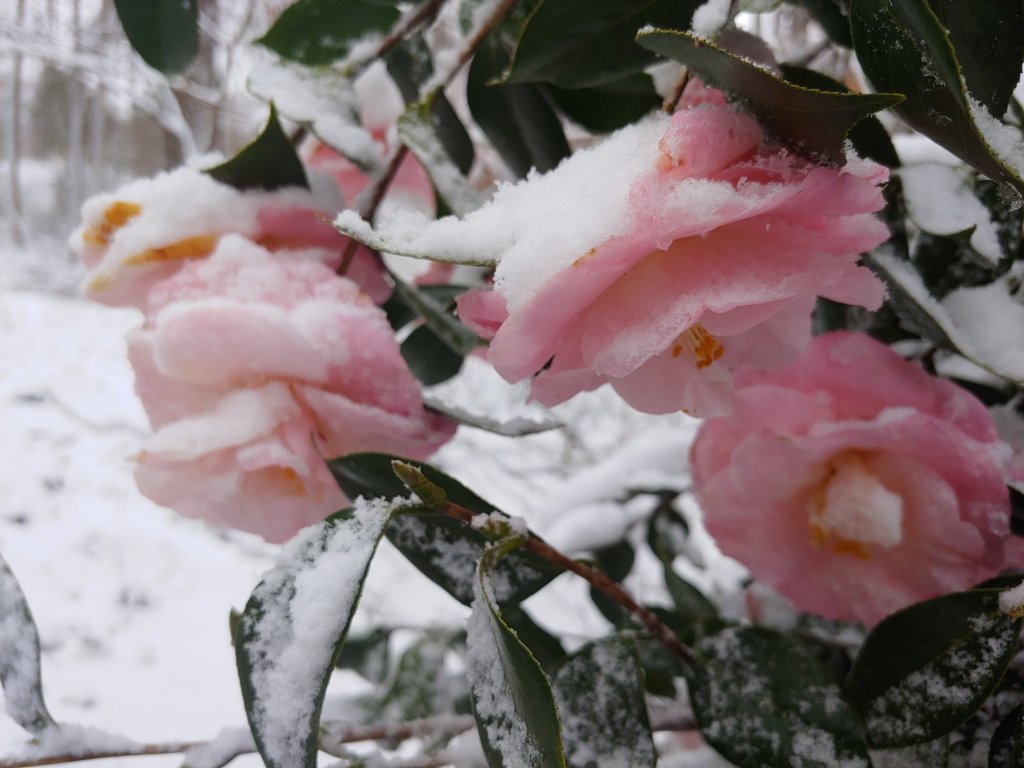

Other flowers will questionably tolerate tonight’s cold, but most are well equipped for late winter freezes, so I expect minimal damage to paperbushes, pieris, and mahonias. Witch hazels typically begin flowering in early February, so these should sail through this cold.
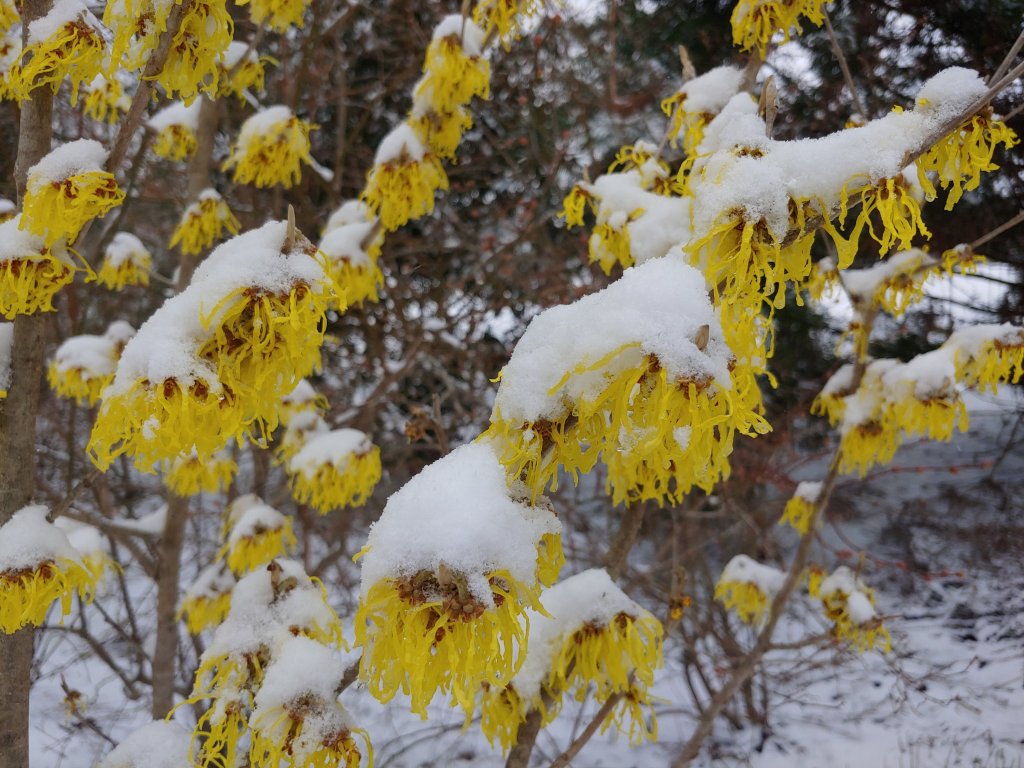
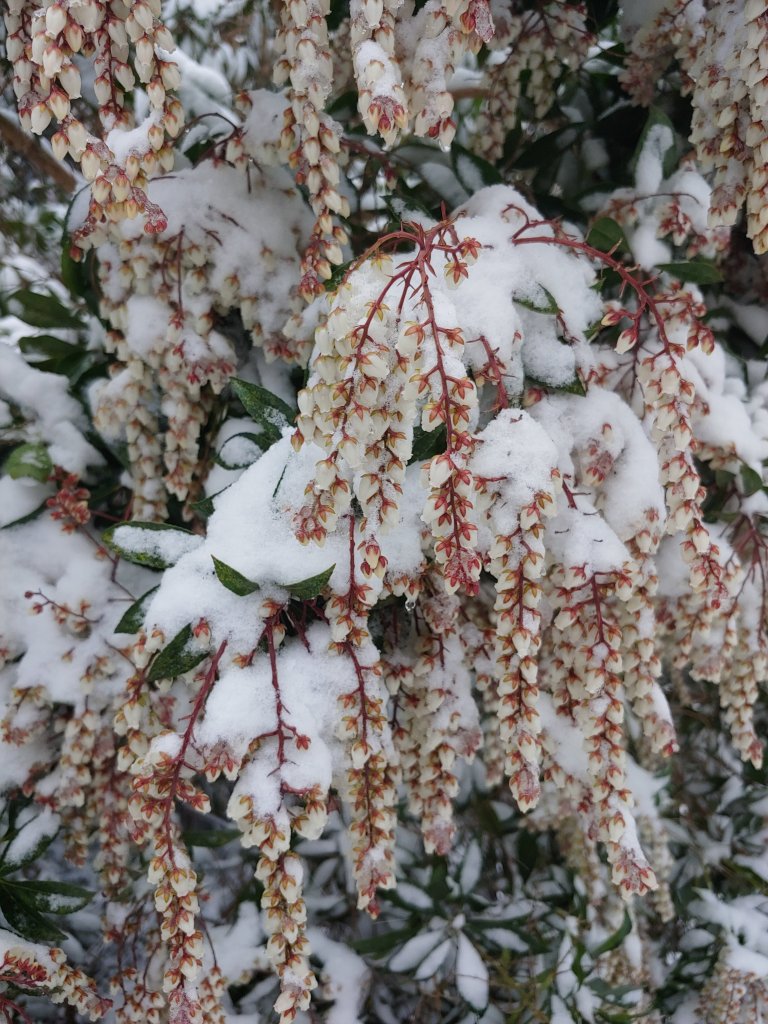
Day Two – after the freeze
Snow is beginning to melt on hard surfaces, and branches have shed most of the snow, though they will continue to lean until temperatures rise. As expected, flowers of camellias are ruined, but other blooms were not harmed by mid-teen temperatures.

Hellebores, snowdrops, and daffodils remain buried, but a partial thaw on this still chilly afternoon should bring them into the sunlight.
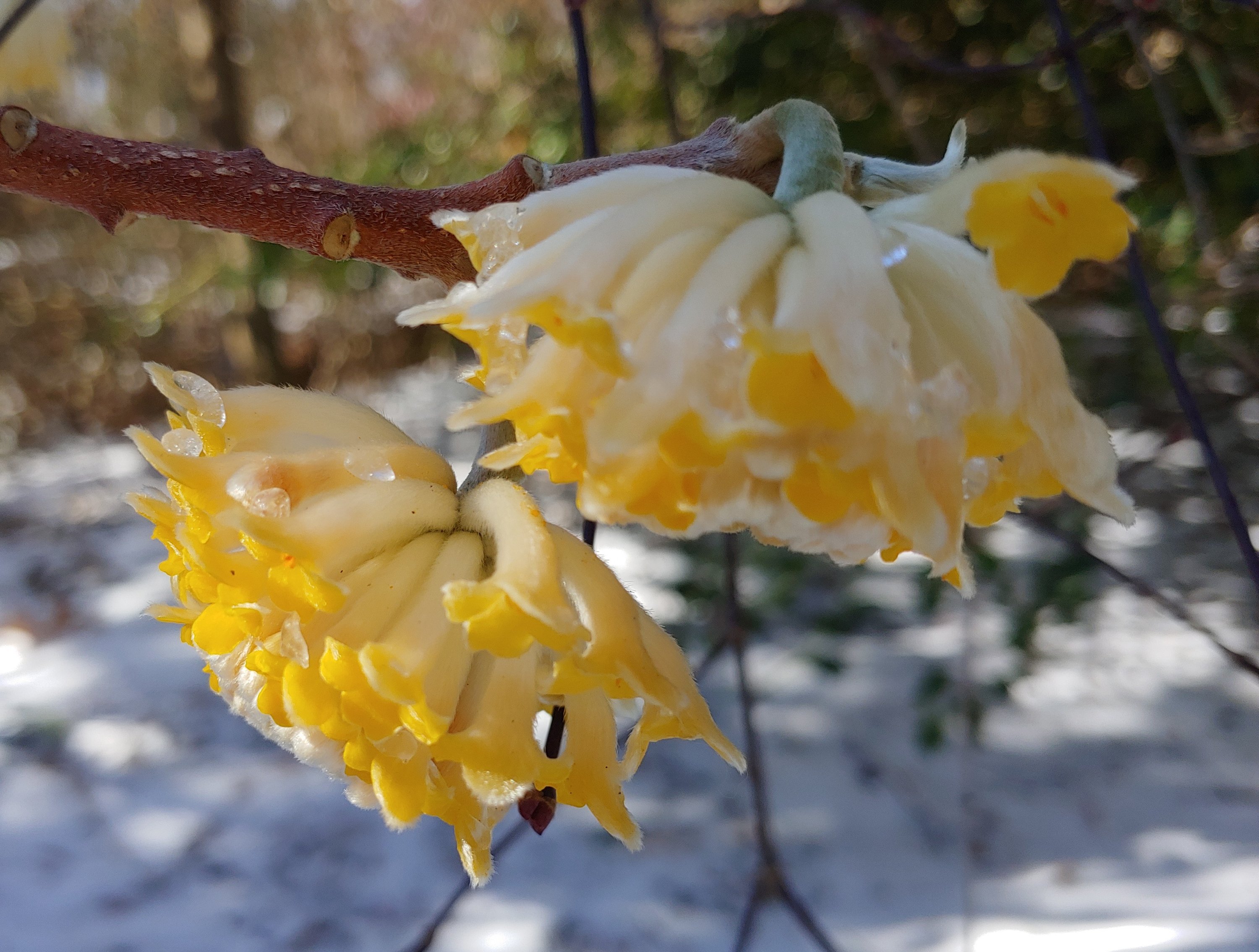
The pink camellia blooms have not turned brown yet, but a close look shows fading color and even half opened buds were damaged. It’s likely that this will set back the cycle of flowering a few days, but there are many more buds that will flower in the next few weeks. It’s likely another freeze will damage blooms in this time, but that’s March in Virginia.

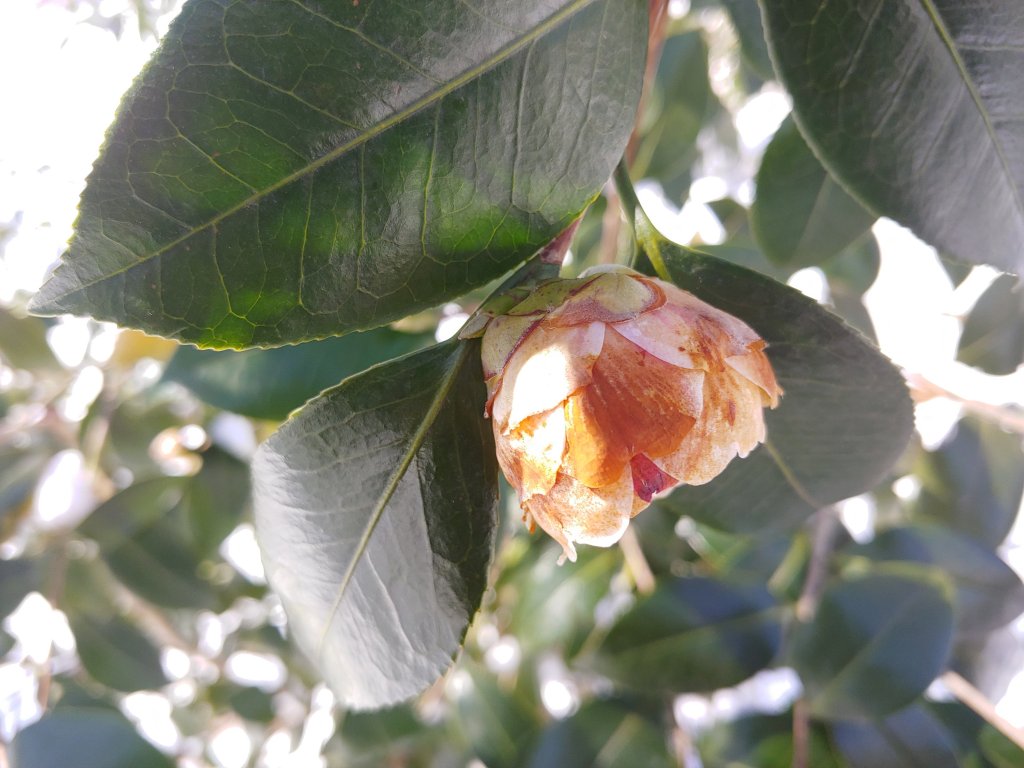

Perhaps I should not be surprised. We got a bit of frost!
This is hardly a problem. April freezes are a problem when tender leaves are emerging. Now, we have flowers but no leaves.
We had temps in the 20s last night and it will dip below freezing again tonight, but we haven’t had snow or ice. I put frost blankets around several roses in large containers that have started leafing out with tender new growth, and I watered them well, but that’s all I did. I hadn’t yet put them up on their pot feet, so they’ll gain some warmth from the terrace where they stand. Most of my borders are well-mulched, including a recent topping-off by my son, so those plants are protected. My hydrangeas had just started showing leaf growth, so I hope I won’t lose flower buds. Que sera, sera!
I don’t believe we’ll see any problems In another three weeks, yes.
Alas, my garden saw a smol tragedy, not to the blooms, but to the wildlife! The spring peepers peep no more. Two larger frogs in our molded pond for several years have also died. We are very sad over this loss. Only one of the goldfish failed to sail through it, though, so life goes on. But we are still sad!
Our peepers are back this evening. I suppose they sheltered the past few cold nights. While it is not unusual to lose frogs in winters when ponds ice over, it seems unlikely that peepers would be harmed by a freeze. I hope yours are back..
We are so happy to confirm that is true! One day’s (deafening) silence, but now they are peeping again!
Our own frog fatalities have been buried with honors by my daughter who first found them. She understands about “compost”. I figure eventually some newcomers will find the pond now that there is a vacancy.
No doubt, frogs will soon find your pond.
Off topic a bit here. I have small patches of yellow grass (tall fescue). I aerated, overseeded, limed, and fertilized in the fall. The rain has helped my grass hit a growth spurt so the yellow circles are more visible. It’s not from dog urine or any chemicals. Could it be yellow patch? I had snow sitting on my lawn for a pretty long time. I’ve had issues with brown patch before, but never anything this early in the season. Should I spray a fungicide or just let nature take its course? Thank you!
The weather has been right to promote yellow patch, and perhaps a fungicide is necessary. If this is the problem it is an indication of excess nitrogen, so less fertilizer or one with a lower ratio of nitrogen might improve the lawn.